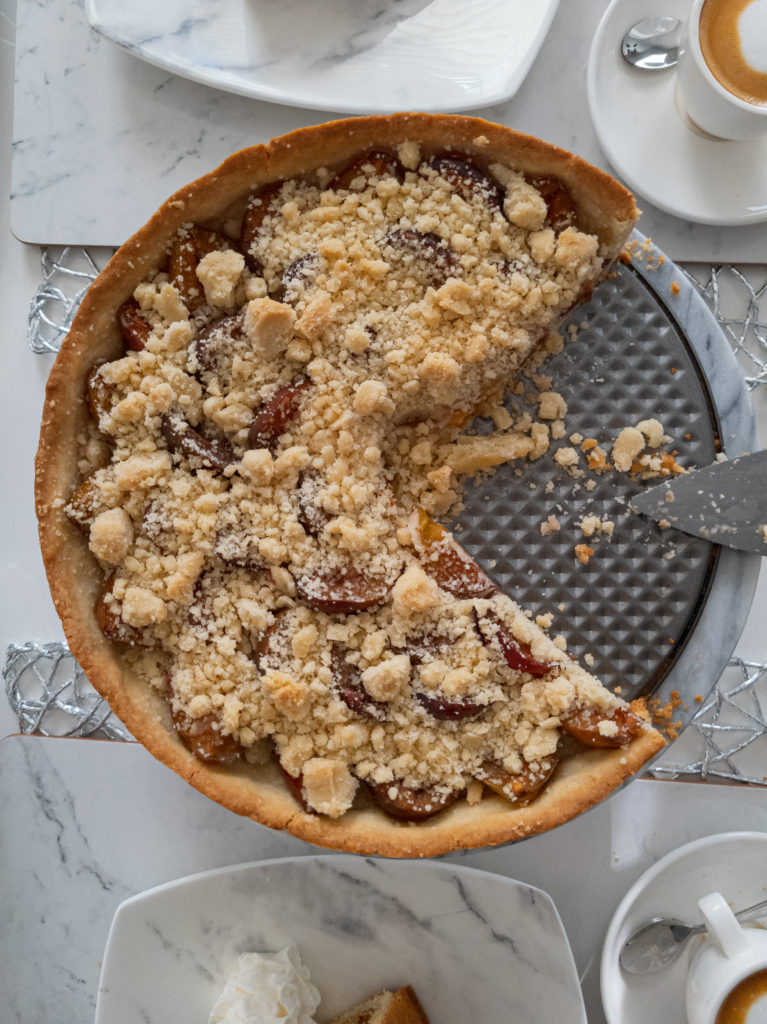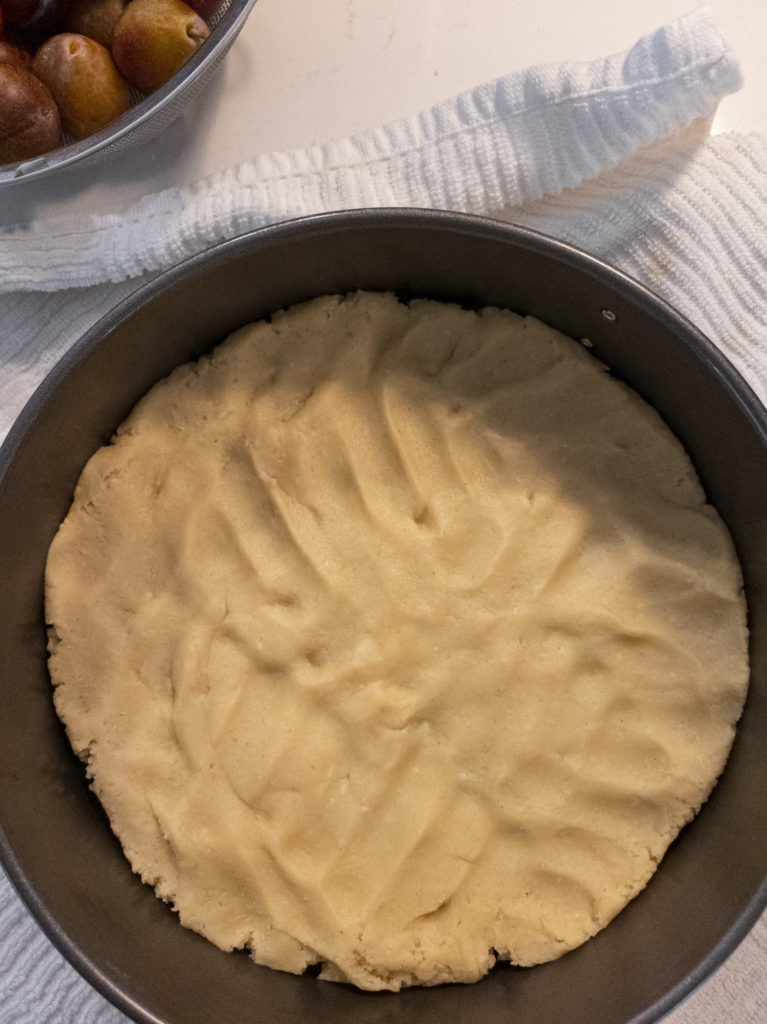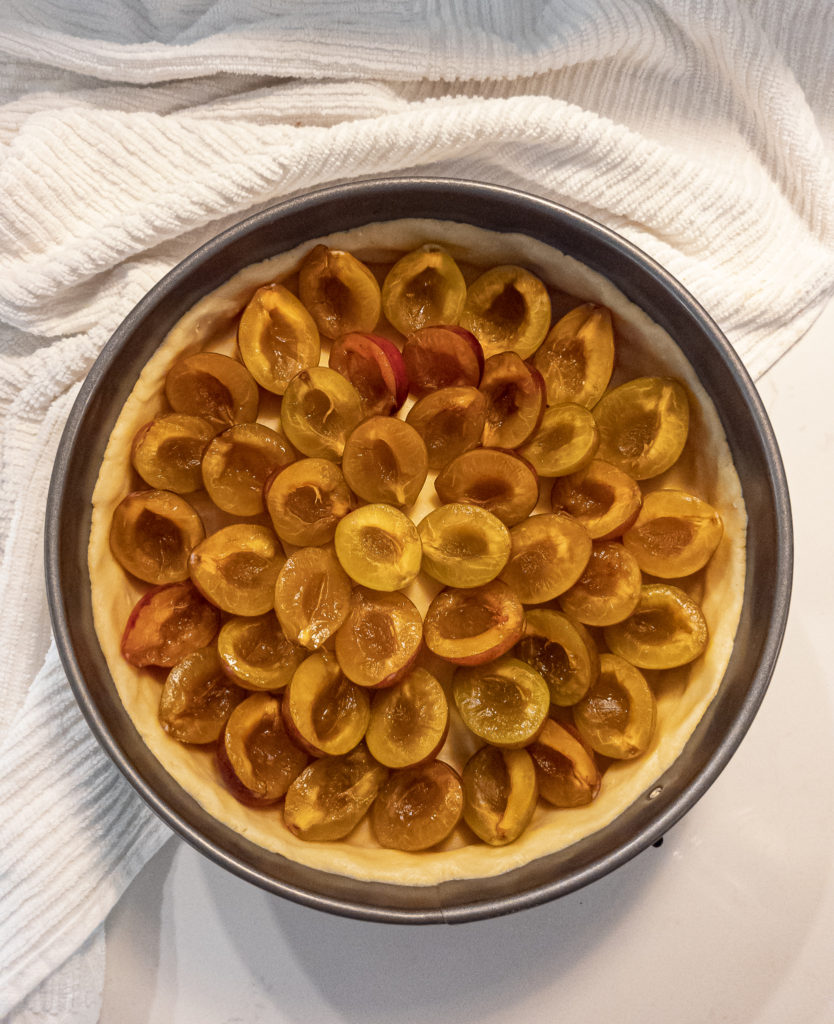



This German Plum Cake-inspired recipe is a bit more delicate, crumbly and "pie"-like, unlike the traditional yeasted version of the German plum cake. I love that version, too (and I'll post another recipe for that when I can).
As there is no yeast nor is this similar to a bread process, there is no kneading required and no rise time!
This Plum pie recipe is perfect for afternoon coffee or tea. I like to serve it with some whipped cream and/or powdered sugar.

This pie crust is a mixture of some of the German no-fuss pie "crusts" and some added science-y fun!
This easy Plum Pie crust has what you'd expect: flour, butter and sugar - but it has some possibly interesting additions: cornstarch and.. alcohol.
It's not for taste! Even though the raw crust dough is a soft consistency, it yields a final crust that is crumbly yet holds together on your fork. Alcohol and cornstarch both help with this crumbly texture.
Regular pie crusts use the standard flour, butter and sugar and they are typically held together with some kind of liquid, e.g. water or milk. They also rely on the butter and little gluten development for the crumbly texture. This is why you aren't supposed to overwork or knead the dough, which leads to gluten developing and the dough possibly toughening up or becoming gluey.

Instead of using milk or water to bring the dough together, high-proof (70-80%) alcohol is used as the liquid to combine everything. As the ethyl alcohol in these liquors, like vodka, don't attach themselves to the flour proteins that develop gluten, you can work with the dough and have no fear of a rubbery texture!
I also use rum or cognac. Similar liquors will work. (TIP! If you don't drink often, buy the mini bottles!)
Now, most alcohol does burn off, but based on my research, not all of it may. So, if you don't want any alcohol in your dough, you can stick with the milk or water. Just don't overwork the dough.
For the pie crust, you simply add all room-temperature ingredients to a bowl and mix with a hand mixer (or use the whisk or paddle attachment of your stand mixer). Once combined, just place it into your lightly buttered spring form pan and press down with your palms and fingers. No special tools required!
Then, place your halved (or quartered) and pitted plums facing upwards in a concentric circle, or however you like. It will be covered in the delicious vanilla streusel, so don't stress about looks!
In the same bowl used for your crust, make the quick vanilla streusel and crumble that over the plums.

My German husband really enjoyed this crust and said it felt lighter than the original (he also said he would have eaten the entire pie at first sitting).
It would be great with other fruits as well! Since there is no added filling, the sweetness comes from the fruit itself, making the fruit the star. I look forward to trying pears and cherries in the future.
I first heard about using alcohol in dough from Food52 and Rick Martinez' Spicy Steak Empanada dough. My research also included help from Scientific American and Cooks Illustrated.
This German-inspired Plum Pie is different from its traditionally yeasted original. There is no yeast and no kneading involved. Beautiful plums are the star here, placed atop a delicate crumbly crust and topped with vanilla streusel.
This recipe is not too sweet. Enjoy a slice with some whipped cream and your afternoon coffee or tea, or have for breakfast or dessert!
You can also use a stand mixer and paddle or whisk attachment. If you have neither, you can also bring everything together with your hands and "knead" it just so it comes together.
This doesn't have to be perfect; the plums will cover the bottom of the curst. See gallery for pictures.
See gallery for pictures.
More notes on alcohol in the dough:
Thank you for supporting me and my blog! <3